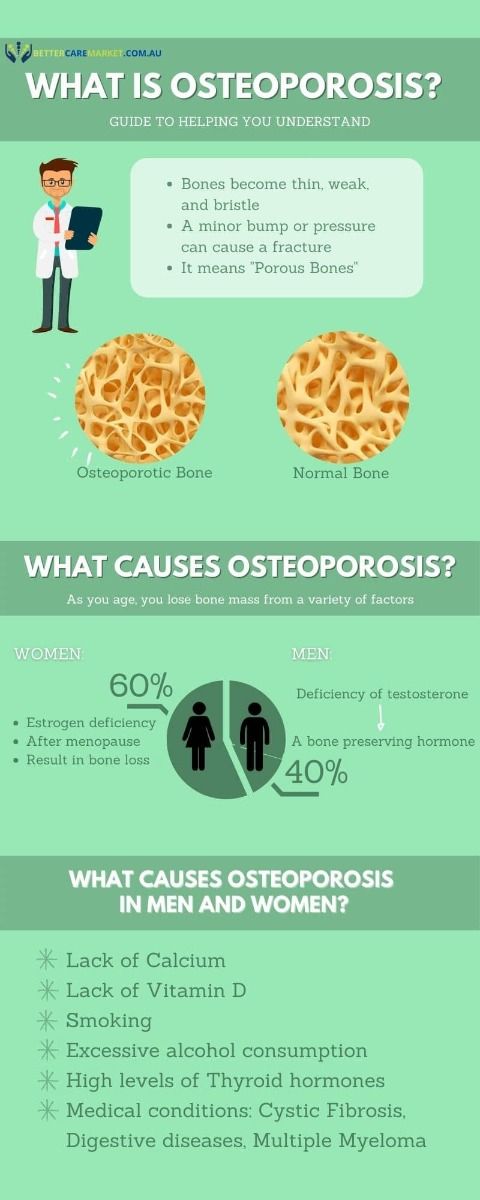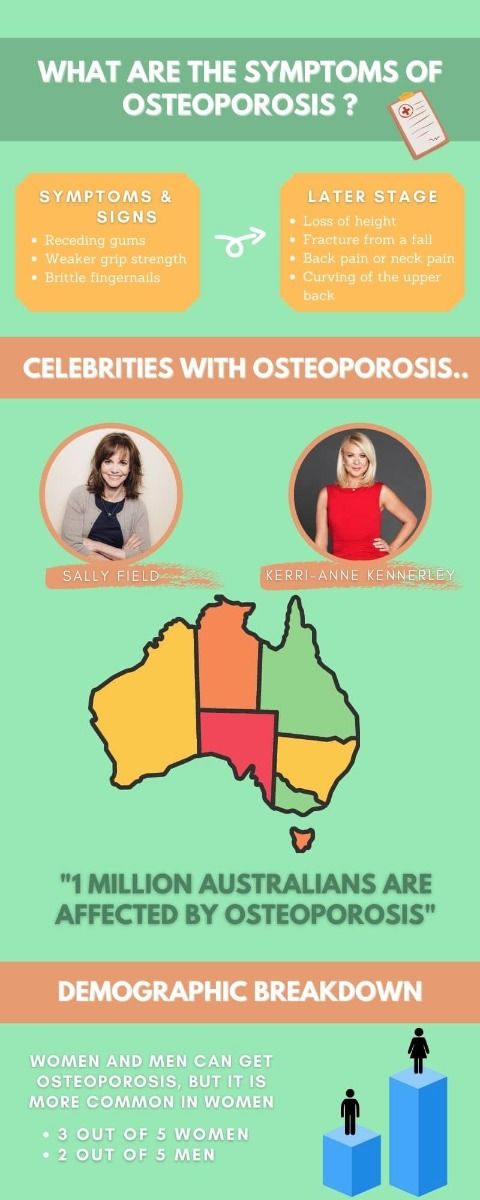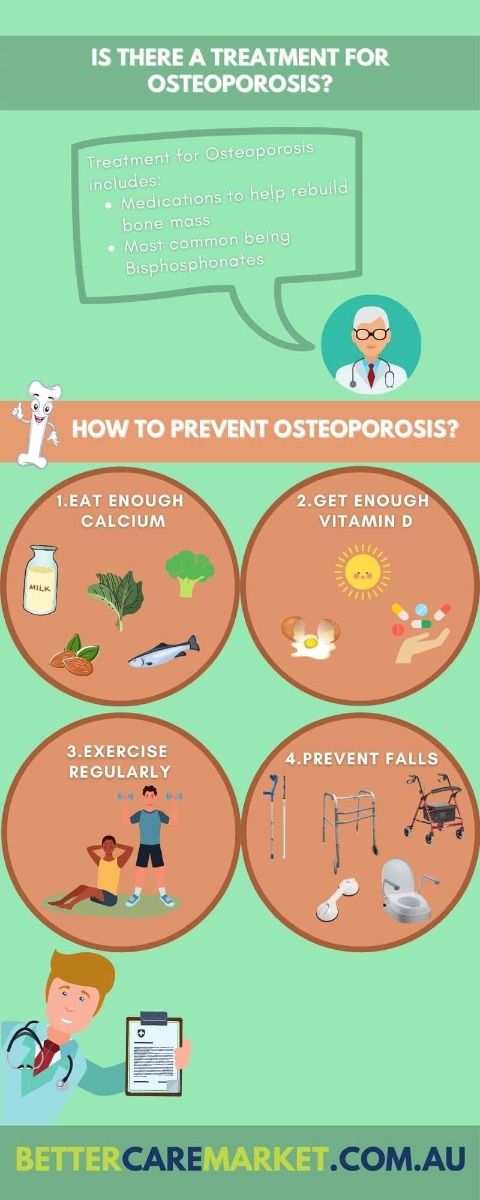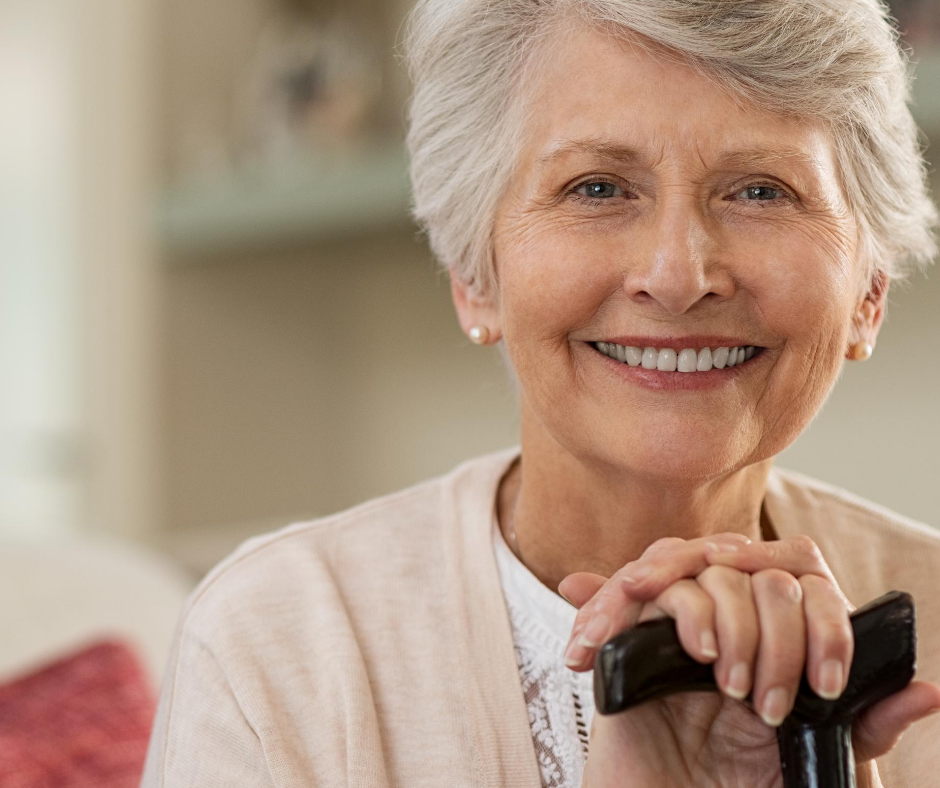Osteoporosis: Bettercaremarket’s guide to helping you understand osteoporosis
Osteoporosis is a condition where the bones become less flexible, more fragile and brittle. The bone density can be so bad that a minor trauma, like a bump or minimal force, can cause the bone to break.



What causes osteoporosis?
After your mid 30’s, our body can no longer keep up with the formation of new bone mass. Very slowly, we start losing more bone than we create. This formation process takes a long time, before it impacts the strength of our bones.
Women experience a major decrease in estrogen after their menopause.
Men show a deficiency of testosterone
These hormones result in bone loss
60% women and 40% men
· Lack of calcium & vitamin D
· Smoking
· Excessive alcohol intake
· High levels of thyroid hormones
· Medical conditions like cystic fibrosis, digestive diseases, cancer treatment and multiple myeloma will increase the risk of getting osteoporosis
What are the signs of Osteoporosis?
In an earlier stage:
· Receding gums
· Weaker grip strength
· Brittle fingernails
In a later stage:
· Loss of height
· Bone Fracture from a fall
· Severe back and neck pain
· Hunching forward of your upper spine
How many Australians suffer from osteoporosis?
1 million Australians are affected by osteoporosis
What is the demographic breakdown?
Although men and women can get osteoporosis, it is more common in women
3 out of 5 women
2 out of 5 men
Is there a treatment for osteoporosis?
Your GP will determine the appropriate treatment for your situation.
The most common treatment are bisphosphonates to slow down bone loss and reducing the risk of fractures.
How to prevent osteoporosis?
Osteoporosis prevention starts with healthy lifestyle changes, good nutrition and exercise. Have a varied diet with plenty of fruit, vegetables and grains.
Avoid smoking, limit alcohol consumption & caffeine, maintain a healthy weight: this will definitely affect your bone health
Eat enough calcium: have calcium-rich foods. Strive for a daily intake of 1,000 mg if you are < 50; 1,200 mg if you are older > 50
Get enough Vitamin D: as it will help your body absorb calcium. Make sure to get enough sunlight exposure! Or get yourself a supplement to meet your goal.
Exercise regularly: do regular weight-bearing exercises and strength-training activities like walking, aerobics, dumbbells or a pedal exerciser to strengthen your muscles.
Prevent falls: reduce the risk of falling by increasing safety inside and outside the house. Some daily living aids can help making your environment safer like: a Raised toilet seat , a rollator, a Reacher or a Grab bar.
We have a separate blog on the relation between menopause and osteoprosis: Menopause and osteoporosis: what is the connection?
 Registered NDIS Provider
Registered NDIS Provider
















Comments